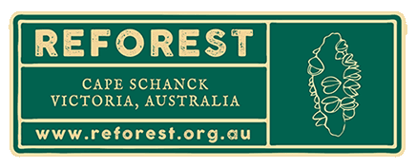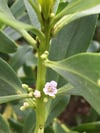Myoporum insulare - Common Boobialla
Myoporum insulare - Common Boobialla
Habit and Habitat:
Myoporum insulare, commonly known as Common Boobialla, is a hardy native Australian shrub known for its adaptability to various environments. It thrives in coastal areas, sand dunes, and heathlands, making it a versatile choice for both coastal and inland gardens.
IUCN Conservation Status:
As of the latest assessment, Myoporum insulare is not listed on the IUCN Red List, indicating that it currently faces no significant conservation threats. Its wide distribution and resilience contribute to the ecological balance of its native habitats.
Place in Local Habitat and Ecosystem Distribution:
Common Boobialla is a key component of coastal ecosystems, particularly in sandy and well-draining soils. Its presence helps stabilize sand dunes and supports local flora and fauna, making it a valuable species for coastal restoration projects.
Planting Companions:
In your garden, Common Boobialla can be planted alongside other coastal and heathland species such as Acacia longifolia, Leptospermum scoparium, and Banksia species. These companions create a dynamic and visually appealing landscape.
Human and Wildlife Uses:
Myoporum insulare has historical importance in Indigenous Australian cultures, where its wood was used to craft tools and implements. In gardens, it offers privacy when grown as a hedge, attracts pollinators with its flowers, and provides habitat for birds and insects. One of the remarkable attributes of Boobialla, is its effectiveness as a fire-resistant screen and protective barrier. The dense growth habit and closely packed foliage of this native Australian shrub contribute to its capacity to slow down the spread of fires, making it a valuable addition to gardens situated in fire-prone areas.
Care Instructions:
To successfully cultivate Common Boobialla in your garden, select a well-draining soil and a sunny to partially shaded location. Once established, it requires minimal maintenance, making it suitable for low-maintenance landscapes.
Size, Height, Width, Flower, and Leaf Characteristics:
Common Boobialla is a dense and bushy shrub that typically reaches heights of 1 to 3 meters. Its small, white or pale pink flowers bloom in clusters during spring and summer, attracting pollinators. The leaves are narrow, elongated, and glossy green.
Latin Etymology:
The genus name "Myoporum" is derived from the Greek words "myo" (to contract) and "poros" (pore), referencing the glandular dots on the leaves. The species name "insulare" signifies its common occurrence on islands and coastal areas.
Traditional Uses:
Indigenous Australian communities historically used Common Boobialla wood for crafting tools. Its leaves were also used for medicinal purposes, highlighting its cultural significance.

